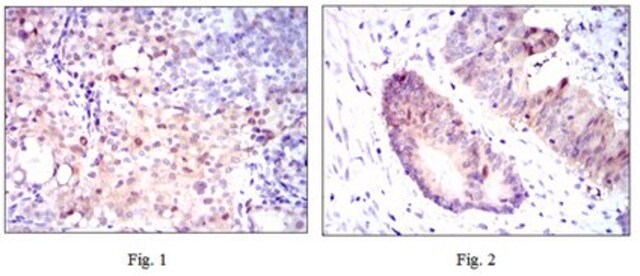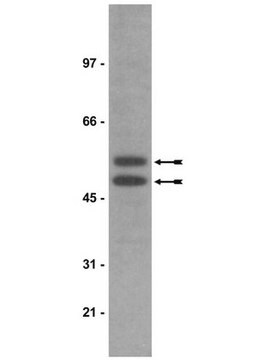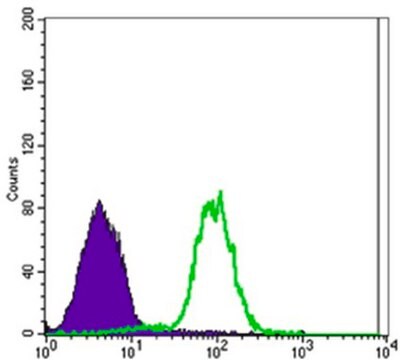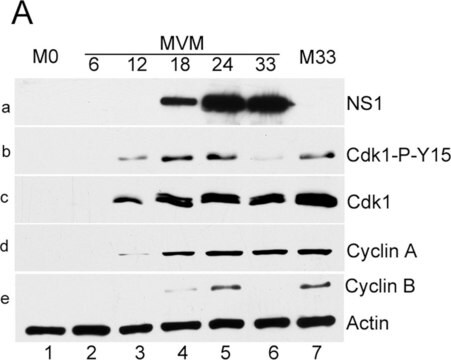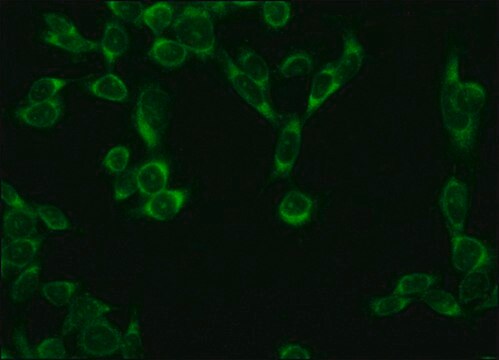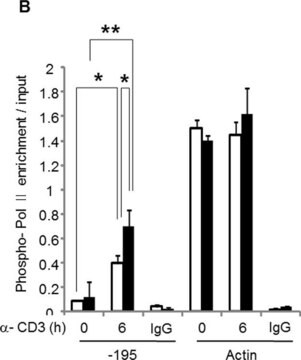MABF957
Anti-CLEC-2 Antibody, clone AYP1
clone AYP1, from mouse
Sinônimo(s):
C-type lectin domain family 1 member B, C-type lectin-like receptor 2, CLEC-2
About This Item
Produtos recomendados
fonte biológica
mouse
Nível de qualidade
forma do anticorpo
purified immunoglobulin
tipo de produto de anticorpo
primary antibodies
clone
AYP1, monoclonal
reatividade de espécies
human
técnica(s)
flow cytometry: suitable
Isotipo
IgG1κ
nº de adesão NCBI
nº de adesão UniProt
Condições de expedição
ambient
modificação pós-traducional do alvo
unmodified
Informações sobre genes
human ... CLEC1B(51266)
Descrição geral
Especificidade
Imunogênio
Aplicação
Flow Cytometry Analysis: A representative lot (pre-conjugated with Alexa Fluor™ 488) detected CLEC-2/CLEC1B expression on the surface of platelets and CD41-positive microparticles in platelet-rich plasma (PRP), but not on monocytes, neutrophils, dendritic cells, B- or T-cells (Gitz, E., et al. (2014). Blood. 124(14):2262-2270).
Function Assay: Clone AYP1 Fab fragment (2.5 µg/mL) cross-linked with anti-mouse Fab-specific F(ab)2 fragments, but not AYP1 Fab or anti-mouse F(ab)2 alone, induced surface P-selectin expression and the aggregation of washed human platelets (Gitz, E., et al. (2014). Blood. 124(14):2262-2270).
Immunoprecipitation Analysis: A representative lot immunoprecipitated CLEC-2/CLEC1B from human platelet lysates. Rhodocytin stimulation prior to cell lysis and IP induced CLEC-2/CLEC1B tyrosine phosphorylation (Gitz, E., et al. (2014). Blood. 124(14):2262-2270).
Qualidade
Flow Cytometry Analysis: 0.2 µL of this antibody detected CLEC-2/CLEC1B on the surface of human platelets.
Descrição-alvo
forma física
Outras notas
Informações legais
Não está encontrando o produto certo?
Experimente o nosso Ferramenta de seleção de produtos.
Código de classe de armazenamento
12 - Non Combustible Liquids
Classe de risco de água (WGK)
WGK 2
Ponto de fulgor (°F)
Not applicable
Ponto de fulgor (°C)
Not applicable
Certificados de análise (COA)
Busque Certificados de análise (COA) digitando o Número do Lote do produto. Os números de lote e remessa podem ser encontrados no rótulo de um produto após a palavra “Lot” ou “Batch”.
Já possui este produto?
Encontre a documentação dos produtos que você adquiriu recentemente na biblioteca de documentos.
Nossa equipe de cientistas tem experiência em todas as áreas de pesquisa, incluindo Life Sciences, ciência de materiais, síntese química, cromatografia, química analítica e muitas outras.
Entre em contato com a assistência técnica

